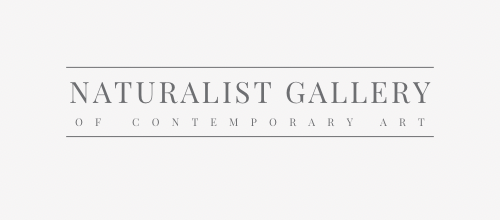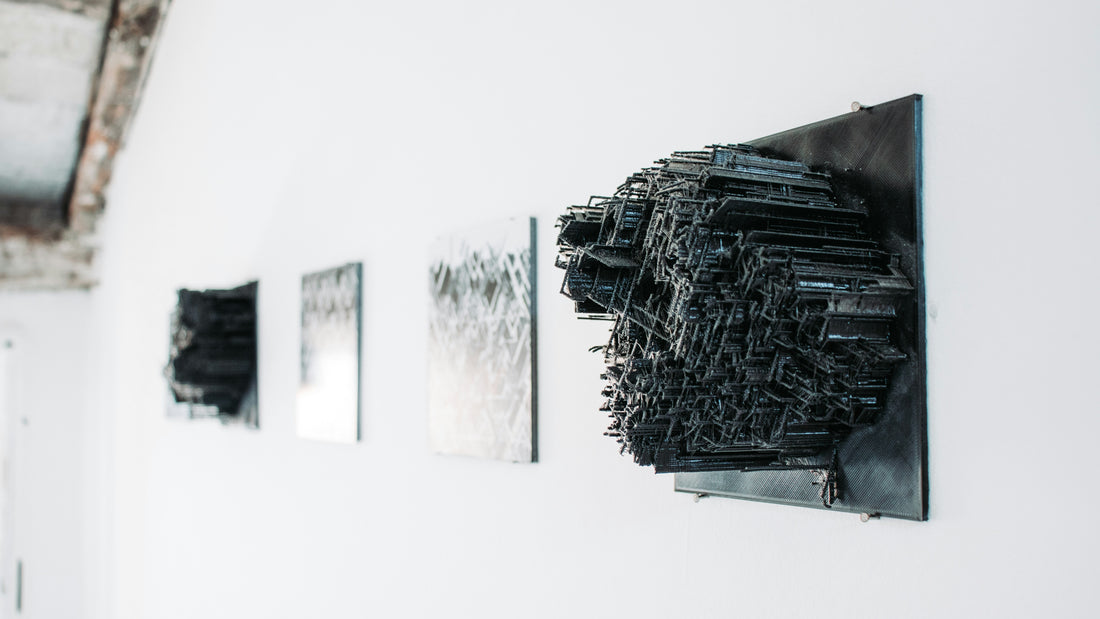The landscape of modern sculpture is continually evolving, with contemporary artists breaking new ground and exploring innovative materials and forms.
Modern sculpture blends traditional and innovative elements, emphasizing fiber art, minimalist abstraction, and the use of ceramics and resin. Artists focus on environmental themes and kinetic elements, exploring new materials and forms to reflect contemporary societal shifts.
The latest trends reflect a mix of traditional influences and cutting-edge technologies, shaping the way we perceive three-dimensional art today.
Explore our curated selection of contemporary artists from around the globe.
Naturalist Gallery offers artist representation internationally. Apply your art.
Fiber Art

Experiencing a resurgence reminiscent of the Pattern and Decoration movement from the 1970s and '80s, fiber art has made a significant comeback. Utilizing organic materials such as wood, wool, and linen, artists are creating pieces that range from wall hangings to stand-alone 3D abstractions, offering a sense of comfort and serenity in modern living spaces.
Minimalist Abstract

This trend reflects the enduring appeal of minimalism paired with the expressive freedom of abstraction. Moving away from traditional representations, minimalist abstract sculptors emphasize the essential qualities of shape and material, inviting viewers to interpret their works through personal lenses, thereby translating nature and emotion into art in its purest form.
Ceramic & Resin

Long-standing mediums like ceramic and resin are gaining popularity due to their versatility and durability. Contemporary artists are experimenting with these materials, pushing the boundaries of traditional sculpture to create unique, aesthetically pleasing pieces that explore new techniques and styles.
Reclaimed & Repurposed

In response to growing environmental concerns, many artists are turning to reclaimed and repurposed materials to create their sculptures. This trend not only underscores the urgent need to consider the ecological impact of art but also challenges artists to think about the lifecycle of their materials, thereby integrating eco-consciousness into their creative processes.
Kinetic Sculpture

Since the mid-20th century, kinetic sculpture has become a significant form of modern art. Incorporating actual movement into sculptures through mechanics, air currents, magnetism, and viewer interaction, artists like Alexander Calder and Jean Tinguely have revolutionized the static nature traditionally associated with sculpture. These works invite viewers to experience art in motion, creating dynamic relationships between the artwork and its environment.
Environmental Sculpture

Environmental sculpture transforms the viewing experience by creating immersive, room-sized spaces that differ markedly from traditional gallery setups. Rather than confronting the spectator as a separate object, environmental art envelops them, encouraging interaction and movement within the artwork itself, akin to moving within a stage set or a landscaped garden.
These modern trends highlight the shifting paradigms in sculpture, where artists are exploring new materials, forms, and concepts. They push the boundaries of traditional sculpture, challenging our perceptions and expectations of three-dimensional art. Whether through the tactile softness of fiber art, the contemplative simplicity of minimalism, the innovative use of ceramics and resins, the eco-conscious approaches of repurposing materials, or the dynamic engagement of kinetic and environmental art, modern sculpture continues to evolve, reflecting the complexities of the contemporary world.
Learn more About Naturalist Gallery of Contemporary Art.

You may also find the following articles helpful:
The 14 Essential Artists of Impressionism
Expressionism: 20 Iconic Paintings & Their Artists
Renaissance Art: Origins, Influences, and Key Figures
Classical Art Movement: Exploring the History, Artists, and Artworks
Figurative Art: Understanding, Collecting, and Appreciating the Style
Daily Routines of Famous Artists: Learn from the Masters
Top 12 Controversial Artworks That Changed Art History

